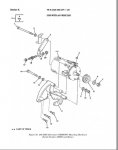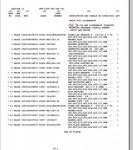You really don't want to use a spacer and a longer stud as it will put more load on the stud due to leverage on the stud at the base (cantilevered).
Mine has not broken but the nut loosening a tiny bit and causing a rattle. Not a great design. My alt is a 100 amp so not as heavy as the larger alternators. The 12.9 metric stud if you can find it is the strongest for this load. The softer studs will become work hardened over time due the weight of the alternator and the off-axis (side load) bracket load.
A sae grade eight bolt is equivalent to a 10.9 metric bolt. The 8.8 metric bolt is only equivalent to the sae grade 5 which is Not suitable for an exhaust stud. The heat cycles along with the alternator weight load to a woefully small diameter exhaust stud is a recipe for failure in time. Exhaust studs can fail (Read below) on their own now we add an off-axis weight load and this exacerbates the situation.
Mark
Found this online.
Q: What causes an exhaust manifold stud/bolt to break?
A: The exhaust manifolds are formed from the factory using fine grain cast iron, and like most metals, it expands and contracts during duty cycles of heating and cooling. This expansion happens naturally, and at first, the manifold and mounting studs are in a state of “elastic deformation.” Elastic deformation is basically expansion and contraction over a period of time retaining the original size and shape. Each duty cycle will provide tension stress on the studs or bolts that hold the manifold in place. The mounting hardware exhibits flexibility over time. However, as the manifold continues to expand and contract more dimensionally, each consecutive time creates larger and larger tension forces that move beyond the elastic state of deformation and become what is referred to as “plastic deformation.” Basically the manifold stretches beyond return and fractures the mounting stud, leaving the manifold permanently deformed and dimensionally changed. This expansion and stretching of the manifold bolts over numerous duty cycles eventually causes too much tension on the bolt(s), stretching them beyond capacity and causing them to fail.




